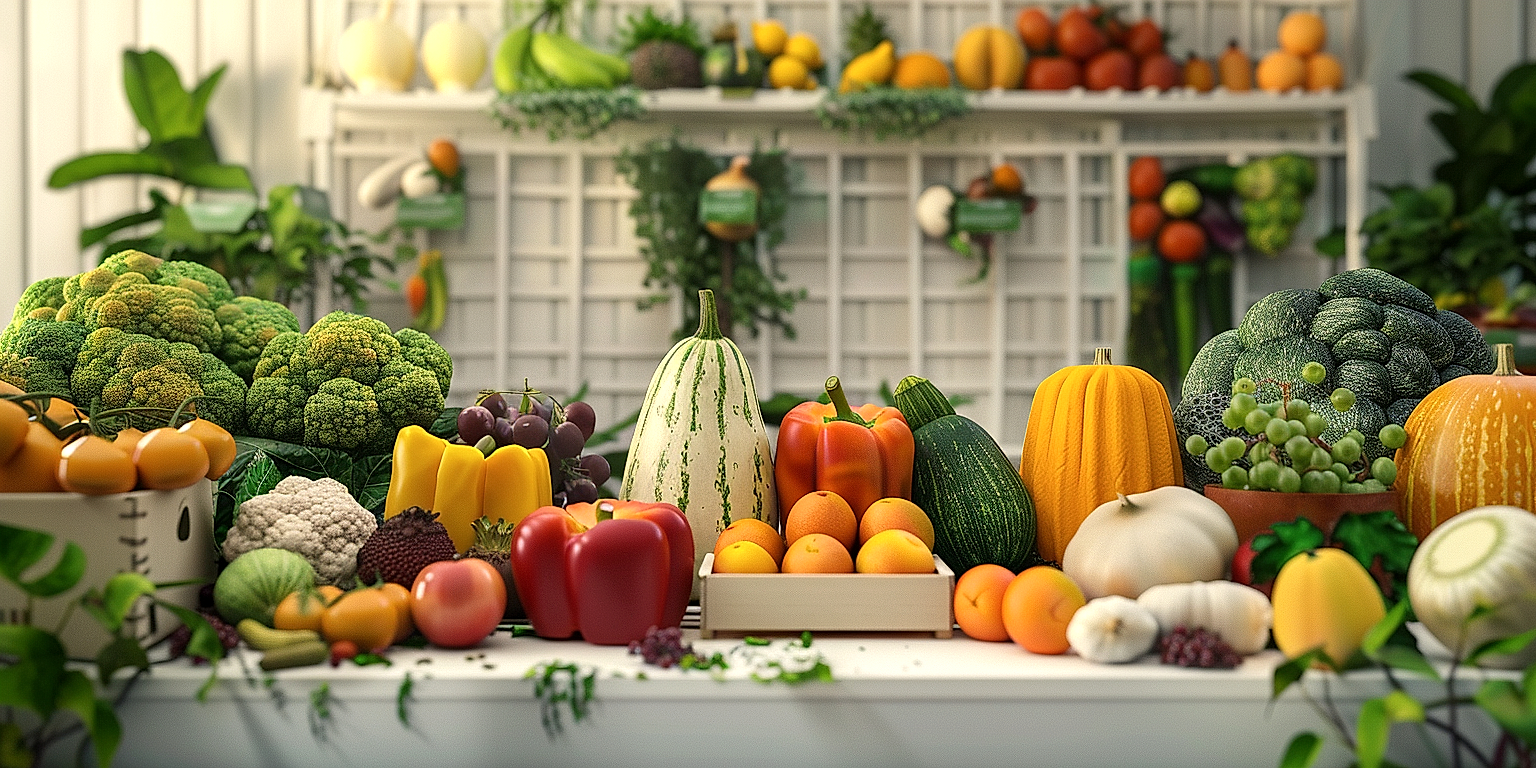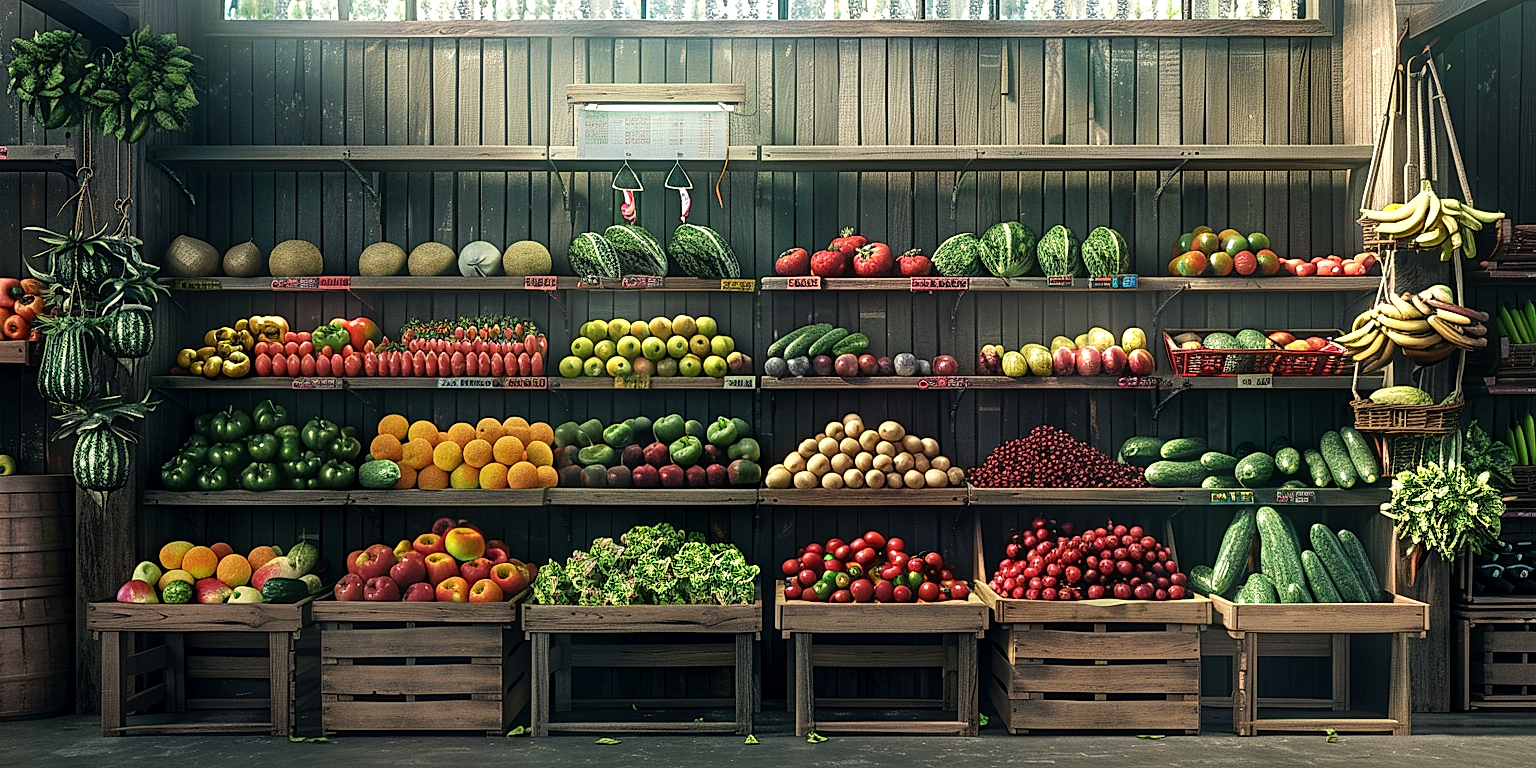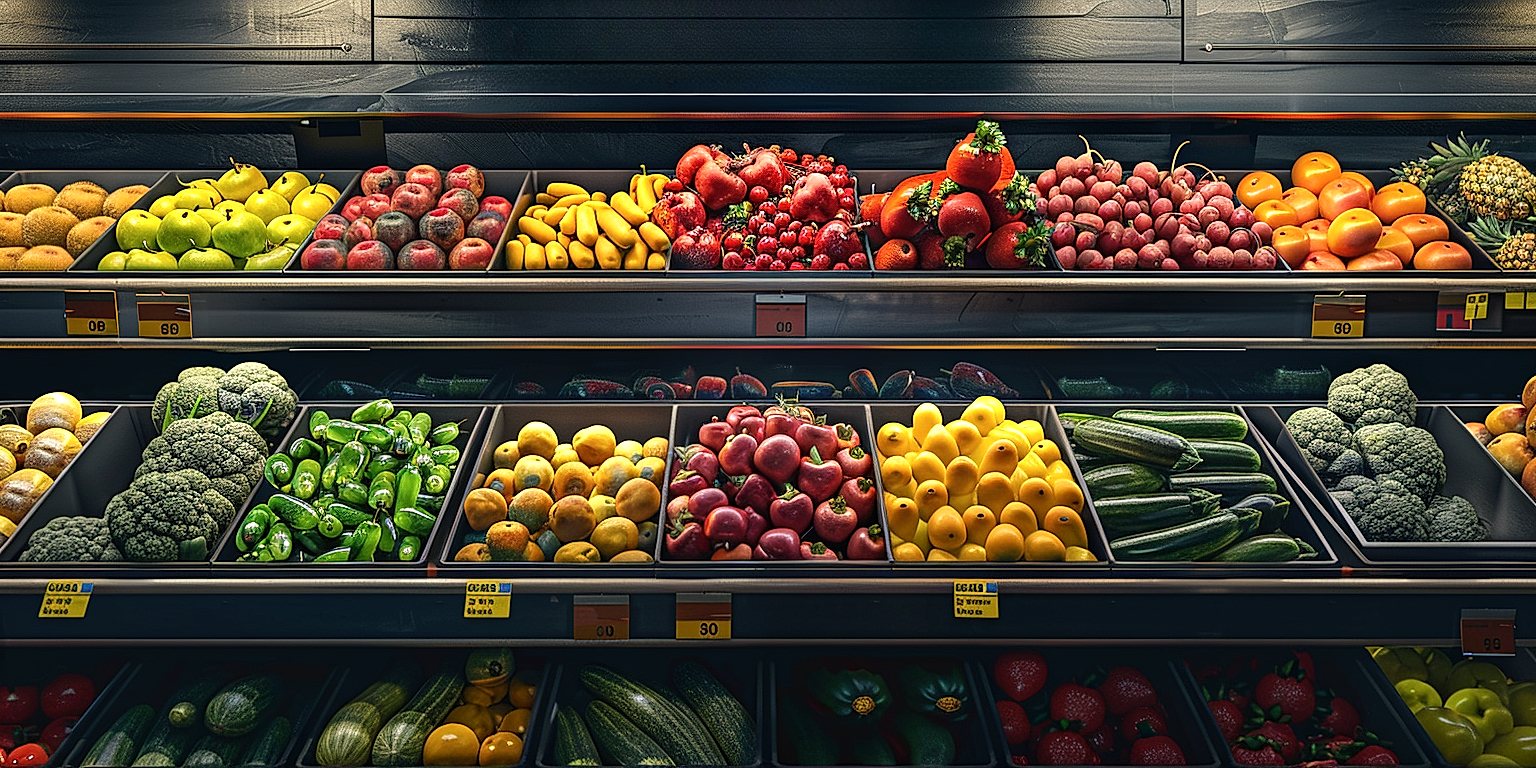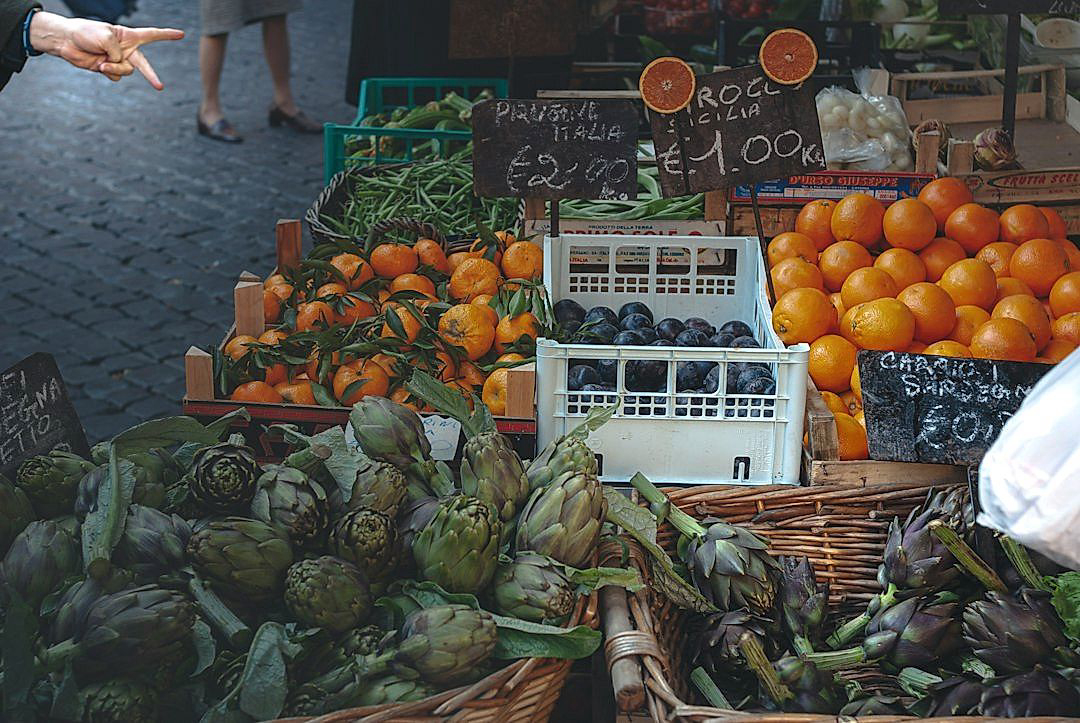In the dynamic scope of retail, strategic merchandising plays an imperative role in driving purchase decisions of consumers.
This significance is heightened in the realm of produce retail where freshness and appeal of products are paramount.
Seasonal changes can significantly influence customer preferences and purchase behaviors.
To maximize profitability and customer satisfaction, retailers should adapt their merchandising strategies according to these shifts in demand.
This article will delve into several effective strategies that produce retailers can apply during different seasons.
We will explore tactical displays, strategic product placement, promotional marketing, and cross-merchandising, and how they can be tailored to meet seasonal trends and preferences.
Contents
- Seasonal Merchandising Strategies For Produce Retail
- 1. Display season-appropriate fruits and vegetables prominently.
- 2. Offer Tasting Samples of Seasonal Produce
- 3. Bundle related seasonal items for cross-selling.
- 4. Create Themed Displays for Holidays and Events
- 5. Highlight seasonal recipes with needed produce.
- 6. Provide discounts on bulk seasonal produce purchases.
- 7. Use vibrant signage emphasizing seasonal freshness.
- The Bottom Line
Seasonal Merchandising Strategies For Produce Retail
1. Display season-appropriate fruits and vegetables prominently.
When it comes to merchandising strategies for produce retail, one of the most efficient ways to increase sales is by prominently displaying season-appropriate fruits and vegetables.
This doesn’t just mean putting the seasonal produce at the front of the store, but rather making it the star of your produce department.
By attractively arranging seasonal fruits and vegetables, retailers can create a visually appealing display that draws customers in and encourages them to buy.
Stacking fresh, shiny apples in a rustic wooden crate, or piling bright, inviting citrus fruits in a stylish basket can create a sense of abundance and freshness that is hard to resist.
The key is to make these displays as visually appealing as possible, which can often be achieved through the use of color contrast and thoughtful arrangement.
For instance, placing deep orange pumpkins next to vibrant green pears can create a visually striking display that captures customers’ attention.
When done right, these displays can perform double-duty; not only do they draw customers in, but they also serve to highlight the quality and freshness of your seasonal offerings.
Choosing produce that is at its peak during a particular season also ensures that you are providing your customers with the highest quality product.
It’s worth noting that this strategy can also enhance your store’s image as a destination for fresh, local produce.
Seasonal fruits and vegetables are often associated with local farms and markets, so prominently displaying them can help create a connection with the community and enhance your store’s local appeal.
This strategy also helps promote sustainability, as seasonal produce typically has a lower carbon footprint than fruits and vegetables that are shipped from far away.
By prominently displaying season-appropriate fruits and vegetables, you can not only increase sales and enhance your store’s image, but also contribute to a more sustainable food system.
Remember, your displays should be changed and rotated regularly, not only to keep the produce looking fresh and appealing, but also to keep customers excited and curious about what new offerings you might have.
Of course, it’s also essential to educate your staff about the seasonal produce you’re featuring so they can assist customers effectively, whether it’s explaining why a certain fruit is particularly good at this time of year, or suggesting ways to prepare it.
In conclusion, prominently displaying season-appropriate fruits and vegetables is a powerful seasonal merchandising strategy that can significantly boost sales and amplify your store’s image as a top destination for fresh, high-quality produce.
2. Offer Tasting Samples of Seasonal Produce
The strategy of offering tasting samples of seasonal produce can be a powerful tool for produce retailers.
This method allows customers to try before they buy, creating a sense of trust and encouraging purchasing.
By providing samples, you also effectively highlight the quality and taste of your fresh, seasonal produce.
This approach can be especially beneficial when dealing with lesser-known or exotic fruits and vegetables that customers may not be familiar with.
Allowing shoppers to taste these items can spark curiosity and interest, leading them to make a purchase they might not have considered otherwise.
Moreover, tasting samples provide an opportunity for interactive customer engagement, helping to build a rapport and fostering a sense of communion over food.
Staff can be trained to use these encounters to educate customers about the produce – how it’s grown, its nutritional benefits, and tips for preparation.
This not only adds value to the customer’s shopping experience, but also positions the store as an authority on fresh, seasonal produce.
Tasting stands can also be used to introduce seasonal recipes that feature the fruits and vegetables being sampled.
These tastings can lead customers to explore other ingredients required for the recipe, thereby increasing their overall basket size.
Furthermore, offering samples can also act as an effective tool for feedback.
Customers’ reactions to the taste, freshness and quality of the sampled items can offer invaluable insights into what works and what doesn’t in your produce selection.
This can inform future purchasing decisions, stock rotation and the implementation of other merchandising strategies.
It is important, however, to keep in mind certain health and safety guidelines associated with sampling food in retail spaces.
For this reason, it might be a good idea to partner with a local health department to ensure all regulations are being followed.
While this strategy requires additional resources in terms of staff and sampling equipment, the potential increase in customer engagement, sales and loyalty can make it a worthwhile investment.
An exemplary method of maximizing sales of seasonal produce is by bundling related items for cross-selling purposes.
This initiative not only expands the understanding of customers about the variety of the produce in the store, but it also encourages them to consider different items that complement each other, and which together, can create a complete meal.
For instance, if a customer is purchasing tomatoes during the summer season, they may also need other ingredients for a salad like cucumbers or lettuce.
This is a prime opportunity for the retailer to bundle these items together and promote it as a complete ‘salad bundle’, thus increasing the likelihood of selling these additional items as well.
Another example could be bundling a variety of seasonal berries together. Given that berries are loved by many and are a popular choice for desserts, smoothies, or just a healthy snack, presenting a ‘berry bundle’ might encourage a customer to try a new fruit they might not have otherwise considered.
The benefit of this strategy is two-fold: Besides encouraging a larger sale in one transaction, it also highlights the variety and freshness of your seasonal offerings, reminding customers why buying seasonally can be a rewarding experience.
The success of this technique, however, heavily relies on clear and appealing presentation.
Each bundle should be neatly packaged, clearly identifying each product included, and ideally, suggesting how they can be used together.
This strategy is a great vehicle for showcasing not only the freshness but also the versatility of the produce.
Furthermore, it is crucial that these bundles offer perceived value for money. This both encourages the purchase of the bundled items, and reinforces customer loyalty by making them feel they have obtained a good deal.
However, it is important to remember that bundling is not about offloading unwanted stock, but rather, enhancing the customer’s shopping experience by conveniently packaging related items together.
It is also worth noting that this strategy can be adapted to suit any size of retail operation. From small farm shops to larger stores, the principles of economies of scale can be used to make this tactic both beneficial for the retailer and appealing to the customer.
In conclusion, effective implementation of this strategy not only accomplishes an increase in sales but also fosters a seasonal shopping culture, strengthening the connection between your customers and the fresh, seasonal produce available at your store.
4. Create Themed Displays for Holidays and Events
Creative Themed displays for holidays and events are a novel idea to attract customers to your retail store.
They immediately draw attention to seasonal produce, making them the center of attraction in your store.
This strategy not only adds beauty to your establishment but provides visual engagement that prompts customers to make a purchase.
Your themed displays should be well thought out and appropriately aligned with the holiday or event that is under focus.
For instance, during the Christmas season, you could create a display with red and green vegetables combined to mimic the Christmas theme.
By coupling this with a complementary array of fruits and vegetables that are seasonal during this period, you provide a one-stop-shop for your customers’ holiday needs.
Through proper planning and creativity, themed displays can be a powerful tool in increasing sales and customer retention.
Furthermore, you can incorporate the use of practical tips that your customers can instantly implement into their holiday meals.
This could range from simple tips like, how to properly store these fruits and vegetables, or more diverse like, how to incorporate them in their holiday meals.
Add some fun into the mix, by hosting holiday-themed contests that relate to the seasonal produce.
Engaging your customers in this way not only helps you sell more but also fosters a sense of community around your retail store.
In achieving this, you need to understand your audience and revolve your themes around what’s relevant to them during the season.
You should also ensure your themed displays are easily accessible to your customers.
Consider placing the items at eye level and avoid crowding too many items in one place as this makes shopping easier for your customers.
Lastly, consistency is key in executing your themed displays.
Keep your themes consistent with the holidays and align them with other marketing strategies you have in place.
5. Highlight seasonal recipes with needed produce.
The importance of incorporating seasonal recipes in your merchandising strategies cannot be overstated.
These recipes not only inspire creativity among shoppers but also boost the sales of fresh, seasonal produce.
Typically, customers appreciate new ideas on how to use the fresh fruits and vegetables they are purchasing, particularly when those recipes incorporate seasonal items.
By suggesting recipes that focus on the seasonal produce available in your store, you can drive customers towards these items and increase their basket size.
One idea to consider is featuring a “recipe of the week” that heavily uses items from your seasonal produce.
These recipes could be displayed near the pertinent produce, enticing customers to buy the ingredients right then and there.
Not only does this suggest a direct use for the produce but also encourages larger purchases.
For example, a recipe for a warm butternut squash salad would certainly prompt customers to buy butternut squash as well as the other ingredients in the salad.
Moreover, remember to change and update these recipes according to the season.
When summer transitions into fall, switch from recipes highlighting peaches and tomatoes to those featuring apples, pumpkins, and squash.
This not only keeps your displays fresh and interesting but also reinforces the seasonality of the produce you’re selling.
In addition, these recipes could also be shared on your store’s website or social media platforms for better customer engagement.
Recognize that in today’s world, food is not just a necessity; it’s a lifestyle, and customers appreciate businesses that aid them in making the most out of their food experience.
In conclusion, by highlighting seasonal recipes in your merchandising, you’re giving your customers fresh ideas for meals, bettering their shopping experience, and most importantly, selling more of your seasonal produce.
6. Provide discounts on bulk seasonal produce purchases.
In the world of retail, particularly in the realm of fresh produce, offering discounts on bulk purchases during specific seasons can be a tremendous asset in pushing product and ensuring a rapid turnover.
In order to implement this effectively, understanding the ebb and flow of varied produce items throughout their respective seasons is crucial.
This approach not only serves to promote sustainability by reducing potential waste, but also effectively encourages customers to buy more of a given product.
Integrating bulk seasonal purchasing discounts into your merchandising strategy can truly be a win-win, leveraging both customer satisfaction and increased sales.
There is something inherently satisfying about scoring a deal, and this can certainly apply to grocery shopping as well.
When customers feel they have earned a saving on quality, fresh produce through purchasing in bulk, this can naturally increase their overall satisfaction with their shopping experience at your store.
It’s also a valuable tool to encourage return visits to your store, as they will associate your retail space with good value and fresh, seasonal produce.
Additionally, offering discounts on bulk seasonal produce can help to clear out your inventory more effectively.
The faster the turnover, the fresher your overall display will be, as replenishing with newly shipped items will ensure a continuous supply of premium items.
That said, it’s important to strike a balance when deciding on the discount rates for bulk purchases.
If the discount is too steep, customers might question the quality of your produce, while if it’s too slight, they may not feel sufficiently incentivized to buy in large amounts.
The most effective strategy combines an appealing discount with the assurance of top-quality, fresh, and seasonally appropriate produce.
This way, you would be able to establish a reputation as a go-to hub for exciting seasonal produce deals, boosting the overall appeal of your retail store.
Moreover, the discounted produce can also serve to complement other strategies such as developing seasonal recipes and creating themed displays for holidays and special events.
In conclusion, incorporating bulk discounts for seasonal produce into your retail merchandising game plan will not only help you optimize your sales and inventory management but also enhance customer satisfaction and loyalty while promoting a sustainable business approach.
7. Use vibrant signage emphasizing seasonal freshness.
The use of vibrant signage emphasizing seasonal freshness is a powerful tool in marketing and merchandising produce at retail stores.
When placed strategically this form of visual communication can attract and hold the attention of shoppers, prompting them into making a purchase.
The use of color, images and impactful text within these signs can enrich the shopping experience, guiding customers towards the produce that would provide the best value for their money.
Retail stores need to design signs that effectively communicate the freshness and the nutritional value of their seasonal produce.
They should be able to encourage shoppers to explore new fruits and vegetables that they may not be familiar with, by highlighting their unique benefits.
These signs can be displayed in high traffic areas or placed directly on the produce racks, leading customers to seasonal choices.
The use of color coding in vibrant signage can also help in segregating different types of produce based on their seasonality.
It can guide the customer’s eye and can be a fun and engaging way to locate and select produce.
Visual cues combined with brief, clear and compelling content can substantially boost the sale of seasonal produce.
Remember, people shopping for groceries are on a mission – they might not have time to read through lengthy descriptions, and that’s where the strategy of vibrant, to-the-point signage comes into play.
Keep signs up-to-date and change them frequently according to the changing seasons and availability of produce.
Additionally, signage should complement the store decor and the fresh produce displays to create a congruous and enticing atmosphere.
Also, include information pieces about how to store and use the produce – it’s a nice way to extend your courtesy to shoppers and make the shopping experience more enriching.
Training store staff to direct customers towards reading the signs and acting upon them can further enhance their efficacy.
After all, they are the ones who are on ground zero, interacting with customers on a daily basis and might know their shopping behavior the best.
So, a well thought-out, attractive, informative and strategically positioned sign can greatly influence the purchases of shoppers, driving your sales north and maximizing your profits.
The Bottom Line
Sentences.
Taking advantage of each season’s bounty can greatly benefit shoppers and stores alike.
By showcasing seasonal produce, offering taste tests, and crafting strategic sales bundles, retailers can generate interest and boost sales.
Holiday-themed displays and useful recipes also provide customers with inspiration and encourage the purchase of fresh, seasonal items.
Coupled with a discount system for bulk buying and eye-catching signage, these strategies create an appealing, engaging environment that emphasizes the quality and charm of seasonal freshness, making it a win-win situation for both the customer and the retailer.




